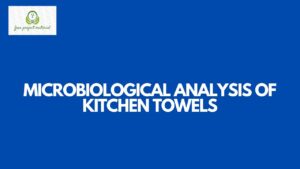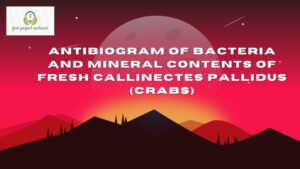ABSTRACT
Anatomical studies of Clitoria Ternatea L.(Fabacea) was carried out using standard procedure. Upper surface (adaxial) and lower surface (abaxial), showed that both features had irregular epidermal cell shapes respectively, amphistomatic stomatal type on both abaxial and adaxial surfaces. The trichome is uniserrate on both surfaces. The stomatal distribution for both abaxial and adaxial surfaces was paracytic and anisocytic. The anticlinal wall pattern is undulate sinuous in both surfaces. These features could be used to delimit C. Ternatea Linn. (Fabacea) from others in the family.
TABLE OF CONTENTS
Title Page – – – – – – – – – i
Certification – – – – – – – – – ii
Dedication – – – – – – – – – iii
Acknowledgement – – – – – – – – iv
Abstract – – – – – – – – – v
Table of content – – – – – – – – vi-viii
CHAPTER ONE: INTRODUCTION
1.1 background of the study – – – – – – 1-2
1.2 Aim and objective of the study – – – – – 3
1.2.1 Aim of study – – – – – – – 3
1.2.2 Objective of the study – – – – – – 3
1.3 Scope and limitation of the study – – – – 3
CHAPTER TWO: LITERATURE REVIEW
2.1 Scientific Classification of the Plant – – – – 4
2.2 Geographic Distribution – – – – – – 4-6
2.3 Agronomic Characteristic – – – – – 6-8
2.4 Botanical Description of C. Ternatea – – – 8-10
2.5 Traditional Properties and Uses of Clitoria – – 10-12
2.6 Pharmacological Properties – – – – 13
2.6.1 Anthelmintic activity – – – – – 13
2.6.2 Antihistaminic activity – – – – – 14-15
2.6.3 Antimicrobial activity – – – – – 15-16
2.6.4 Cytotoxic activity – – – – – – 16
2.6.5 Central cholinergiv activity in rats – – – 16-17
2.6.6 Hypoglycemic effect – – – – – 1718
CHAPTER THREE: MATERIAL AND METHOD
3.1 Material – – – – – – – – 19
3.1.1 Sample Collection – – – – – – 19-20
3.2 Method – – – – – – – – 20
3.2.1 Anatomical Studies – – – – – 20
CHAPTER FOUR: RESULT AND DISCUSSION
4.1 Results – – – – – – – – 21
4.2 Discussion – – – – – – – 22
CHAPTER FIVE: CONCLUSION AND RECOMMENDATION
5.1 Conclusion – – – – – – – 23
5.2 Recommendation – – – – – – 23
References
CHAPTER ONE: INTRODUCTION
1.1 Background of the Study
Since some immemorial nature has been a mere source of medicinal plant. These medicinal plants are gifts of God to cure infinite number of disease in human beings and other living organism. They have been the major sources of drugs in all system of medicine and other ancient system s in the World. Such exhaustible source of active ingredient invaluable in the management of many intractable disease which habour by plant kingdom. In the various system of medicine many plant and herbs are used to treat various infirmities in all ancient scriptures of Ayurueda, Aparaditaps is mentioned as one of the important herb. It is a good looking twinge herb Aparajita’s botanical name is clitoria, ternatea and belongs to fabacea (Piplionaceae) family, it is probably originated in tropical Asia (Gomez and kalama, 2003). It is widely distributed throughout and himid, lowland tropic of Africa Asia and central America. It is found in low and medium attitudes of the settled areas. C. Ternatea is a strongly persistent, sparsely pubescent, legume. It is perennial climber with slender downy stem found throughout the tropical regions of the country being cultivated in gardens everywhere and often also found growing over hedges and thickets. It is seen that Aparajite is being adapted to clay soils and has been tested as a forage and cover crop, but never developed as a pasture cultivar (Hall, 1992). In various aguredic preparations different plants of this plant have been used as an active ingredient which is used for treatment of several disorders. There are several reported Ayurvedice Medha” Drugs which contain C. ternatea along with other plants. This plant has been scientifically studies for various pharmacological activities like antihistaminic, anthelimintic hypoglycemic, antidepressant sedative (Pati and Patill, 2011).
1.2 Aim and Objective of the Study
1.2.1 Aim of the Study:
To determine Epidermeal features of Elitorial ternatea L. (Fabaceae).
1.2.2 Objective of the Study:
Is to asses epidermeal features of Clitorial ternatea l. )Fabaceae).
1.3 Scope and Limitation of the Study
The scope of this work is focus on epidermal features of Clitoria ternatea L. Fabaceae).



